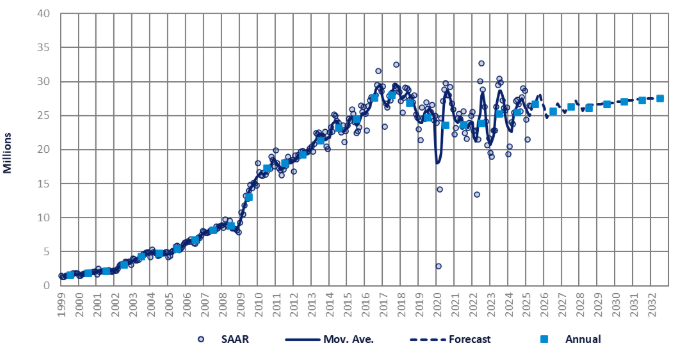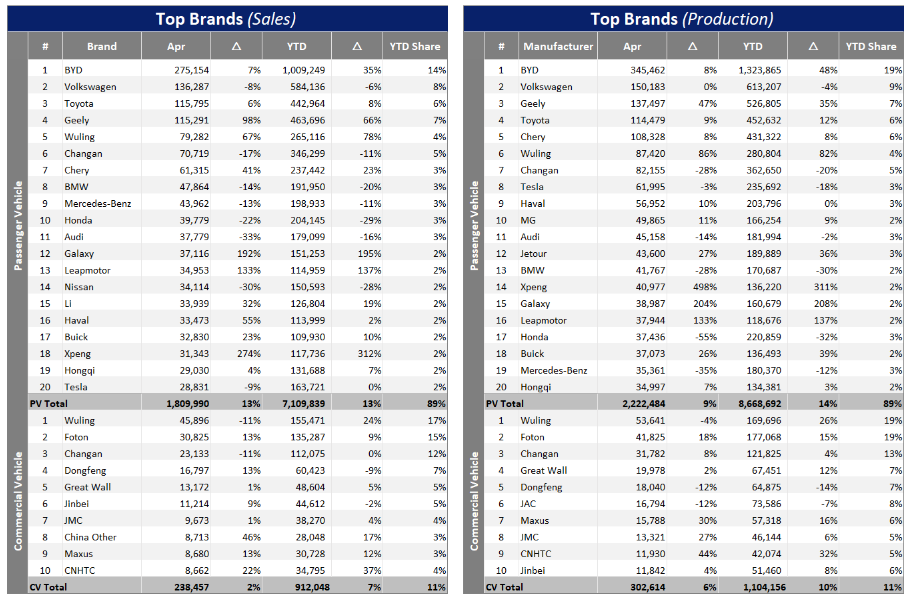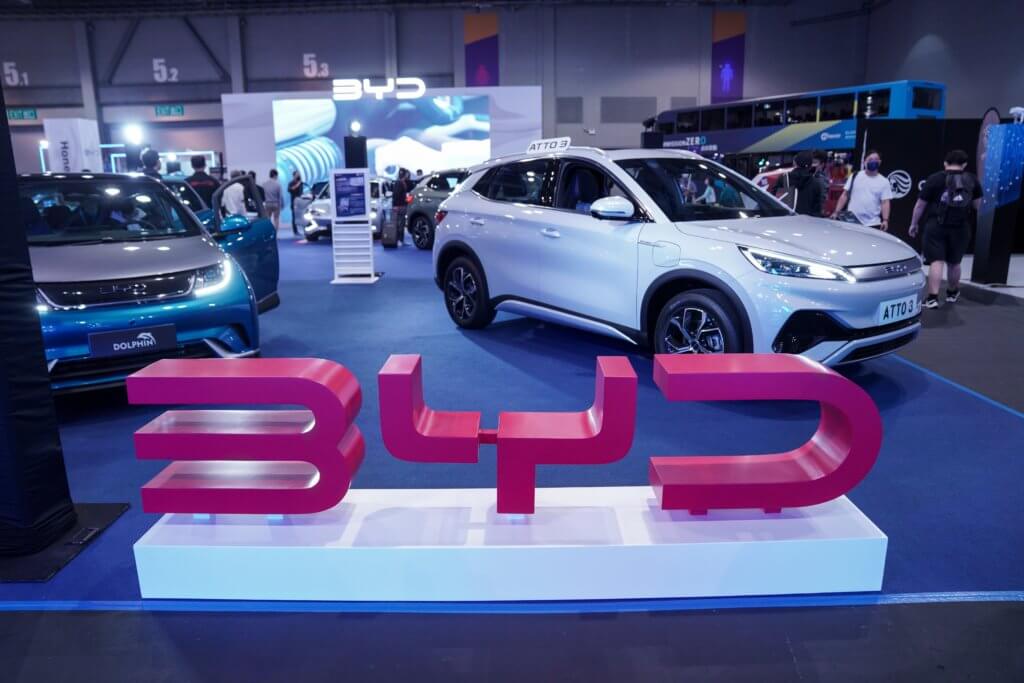In April 2025, China’s light vehicle (LV) market sustained its robust growth trajectory, with sales increasing by 12% YoY to approximately 2.0 million units. This expansion was chiefly propelled by a surge in demand for PVs (passanger vehicles or cars), which grew by 13% YoY and reached 1.8 million units during the month, accounting for 88% of the total LV market.

The market’s overall performance was bolstered by government stimulus measures—notably the extension of vehicle trade-in and scrappage incentive programs, which have markedly stimulated domestic demand, especially for NEVs. Additionally, sales of LCVs followed a positive trend, with a modest 2.0% YoY increase. On a cumulative basis, LV sales in January-April grew by 12.1% YoY. The national subsidy policy, promoting the replacement of older vehicles with new models, continued to serve as a pivotal driver of consumer spending. Data indicates that the April selling rate reached an annualized figure of 26.4 million units, reflecting a slight 1% decrease from March.

The Chinese government has played a crucial role in driving the growth of the LV market through a series of supportive policies and incentives. The extension of vehicle trade-in scrappage incentive schemes until the end of 2025 has been particularly effective in stimulating domestic demand, particularly for NEVs. These incentives help to reduce purchase restrictions, lower the cost of ownership, and promote the adoption of sustainable transportation solutions. Additionally, the government’s focus on reducing emissions and promoting green technologies has created a favorable environment for the development of the NEV market.
The rapid growth of China’s e-commerce sector has also had a significant impact on the LV market, particularly in the Commercial Vehicle segment. The expansion of e-commerce platforms and the growth of online retail have led to increased demand for last-mile logistics and small business operations, making LCVs an essential component of the modern supply chain. The need for more efficient and flexible transportation solutions has driven demand for LCVs, contributing to the overall growth of the automotive market.
In terms of production, total LV output for April stood at 2.5 million units. This figure represents a robust 8.4% YoY increase, despite being a 12.2% MoM decline. Cumulatively, YTD 2025 volumes have amassed to 9.8 million units, indicating a commendable growth of 13.2%. PV production, which constitutes 90% of overall LV production, achieved a significant result in April, reaching 2.2 million units. This marks an impressive YoY surge of 8.8%. In contrast, the LCV sector reported a more modest, yet still noteworthy, increase, with April’s production totaling 303k units, up 6.1% from the previous year.
In April, China’s LV exports maintained a robust growth trajectory, with 486k units shipped. This figure represents a YoY increase of 1.5%, as exports accounted for 19% of overall LV production. The PV segment was the primary driver of this growth, with 430k units exported, although this marked a 0.7% YoY decrease. Concurrently, the CV segment exported 56k units, registering a 22.5% YoY increase. From January to April 2025, China’s automobile exports reached 1.8 million units, reflecting a YoY growth rate of 4.9%.
The temporary conclusion of US-China trade negotiations, with tariff rates mutually reduced until August 10, 2025, has provided some relief to China’s export market. However, the demand for Chinese trade remains uncertain amidst ongoing negotiations. The export market is a crucial component of the country’s LV industry, and any changes in trade policies or tariffs can significantly impact the market’s performance. Ongoing trade negotiations and the potential for further changes in trade policies add an element of uncertainty to the market’s future outlook.

US Tariffs are shifting - will you react or anticipate?
Don’t let policy changes catch you off guard. Stay proactive with real-time data and expert analysis.
By GlobalDataRegarding the sales forecast, the recent tariff policies introduced by the Trump administration against China have injected a significant degree of uncertainty into the broader market. However, it seems that the resulting impact is more indirectly related to consumer apprehension about the overall economic climate rather than having a direct effect on exports.
Conversely, the Chinese LV market is expected to sustain its growth momentum in the coming months, bolstered by ongoing government support, technological advancements, and evolving consumer preferences. The NEV segment, in particular, is positioned for further expansion, driven by a growing consumer preference for sustainable transportation solutions and continuous technological innovations. The market’s responsiveness to emerging trends and government policies will be pivotal in shaping its future trajectory.
In summary, April 2025 marked another strong month for China’s LV market, with robust sales growth across key segments and brands. The market’s performance underscores the importance of government incentives, technological innovation, and evolving consumer preferences in driving its continued expansion. As the market continues to evolve, it will be crucial to monitor emerging trends, policy changes, and technological advancements to stay ahead of the curve and capitalize on new opportunities.


This article was first published on GlobalData’s dedicated research platform, the Automotive Intelligence Center.





